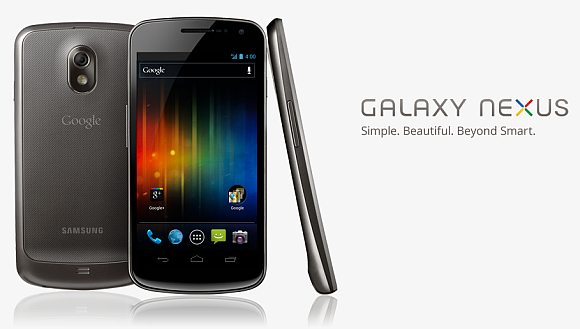Just hours ago, the anticipated Galaxy Nexus has finally launched. This is the first device to feature Google’s latest Android 4.0 Ice Cream Sandwich OS which brings a host of improvements. Availability is slated for November in US, Europe and Asia but no specific countries where mentioned for our region.
As revealed earlier, the Galaxy Nexus runs on a dual-core 1.2GHz processor and comes with 1GB of RAM. Among the biggest highlight is the 4.65″ inch screen that offers HD Super AMOLED display that supports 1280×720 resolution and has a response rate of 0.01ms. The display’s pixel density rivals with Samsung upcoming Galaxy Note which is a 5.3″.
In terms of design, it isn’t the thinnest at 8.94mm but boasts having a 4.29mm bezel. Like the previous Nexus S, the display is also contoured. Over at the back, it also features a Hyper Skin cover which is similar to the one found on the Galaxy S II which gives it a durability and premium feel for an ultra thin profile. We are curious to know if it can bend as well as the Galaxy S II.
For imaging, the Galaxy Nexus comes with a 5MP camera which is pretty low for today’s smart phone standards. Despite that, it is capable of shooting 1080p videos with continous focus and boasts having the one of the snappiest camera without lag. In the demo during the event, the camera seems to be ever ready to take shots instantly which allows you to capture epic moments without fail. Nevertheless, speed and quality are 2 different things and we look forward to its sample photos to find out if it is any good as a imaging device.
The main highlight is the OS itself – Ice Cream Sandwich, which brings tablet and smartphone OS together. On first look, it does look like honeycomb OS as seen on earlier leaks. On top of that, they have added a couple of features such as improved browser, Gmail and Calendar apps. In terms of aesthetics, Ice Cream Sandwich uses a new Roboto font that is more futuristic and inspired by magazine layouts. Several gestures have been added for more seamless actions and like the Android 3.0 honeycomb tablets, the physical Android buttons are replaced with virtual ones that appear at the bottom of the screen.
Since Siri is in the spotlight as an intelligent voice assistant feature, the new OS offers something new in voice control. Instead of recognising speech after talking, the new OS is capable of live speech recognition. This means you can see the text as you speak in near real-time manner.
You can relive the event moments at Engadget’s live blog coverage. For more information of the device, visit their microsite here.
Head after the break for video and gallery of the Galaxy Nexus.
Gallery













